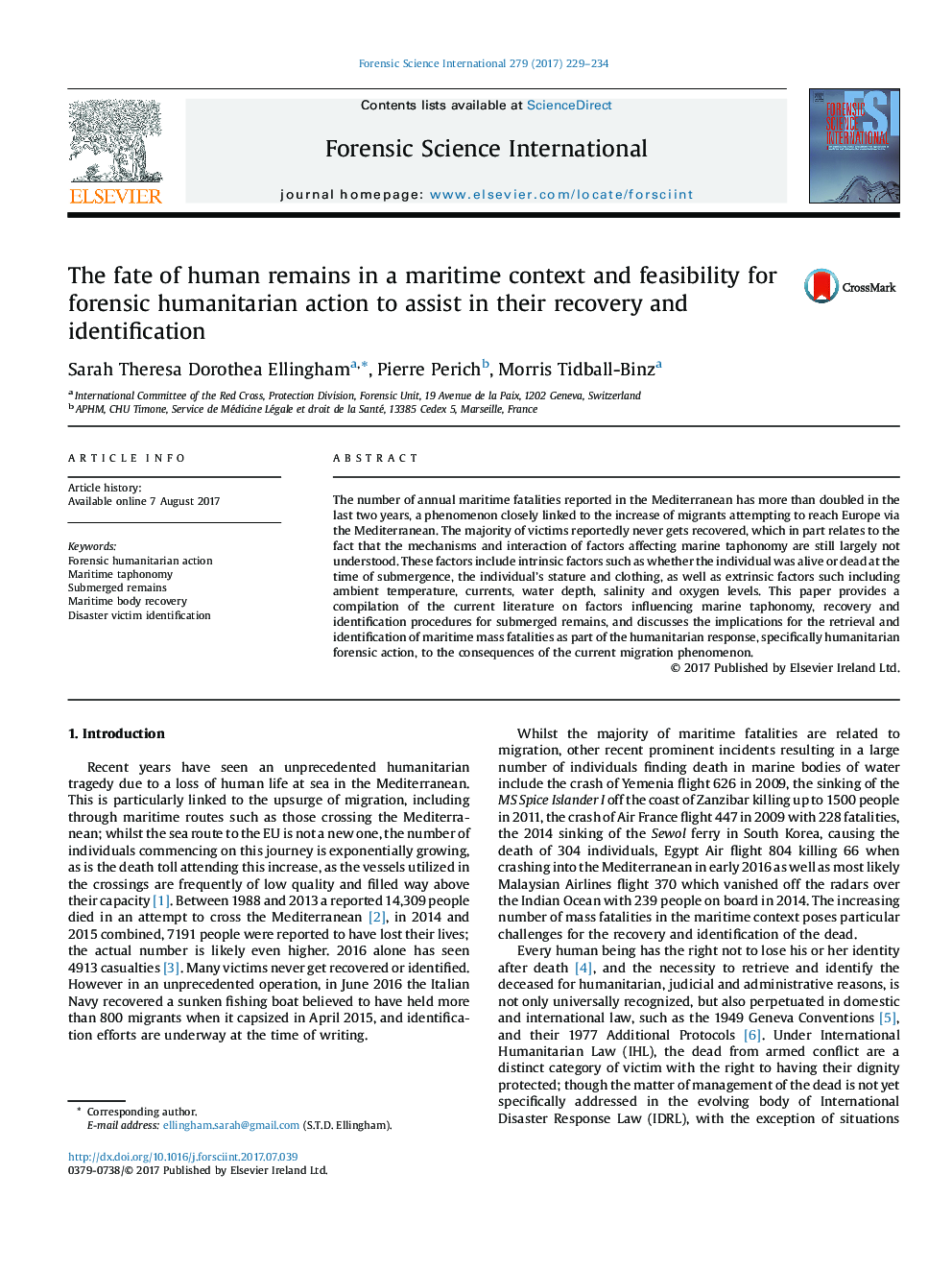| کد مقاله | کد نشریه | سال انتشار | مقاله انگلیسی | نسخه تمام متن |
|---|---|---|---|---|
| 6462172 | 1421971 | 2017 | 6 صفحه PDF | دانلود رایگان |
- The value of forensic humanitarian action in the identification of decedent migrants.
- Challenges and opportunities in the recovery and identification of marine fatalities.
- Review of mechanisms of marine taphonomy.
- Illustration of discussed marine taphonomy through case examples.
The number of annual maritime fatalities reported in the Mediterranean has more than doubled in the last two years, a phenomenon closely linked to the increase of migrants attempting to reach Europe via the Mediterranean. The majority of victims reportedly never gets recovered, which in part relates to the fact that the mechanisms and interaction of factors affecting marine taphonomy are still largely not understood. These factors include intrinsic factors such as whether the individual was alive or dead at the time of submergence, the individual's stature and clothing, as well as extrinsic factors such including ambient temperature, currents, water depth, salinity and oxygen levels. This paper provides a compilation of the current literature on factors influencing marine taphonomy, recovery and identification procedures for submerged remains, and discusses the implications for the retrieval and identification of maritime mass fatalities as part of the humanitarian response, specifically humanitarian forensic action, to the consequences of the current migration phenomenon.
Journal: Forensic Science International - Volume 279, October 2017, Pages 229-234
